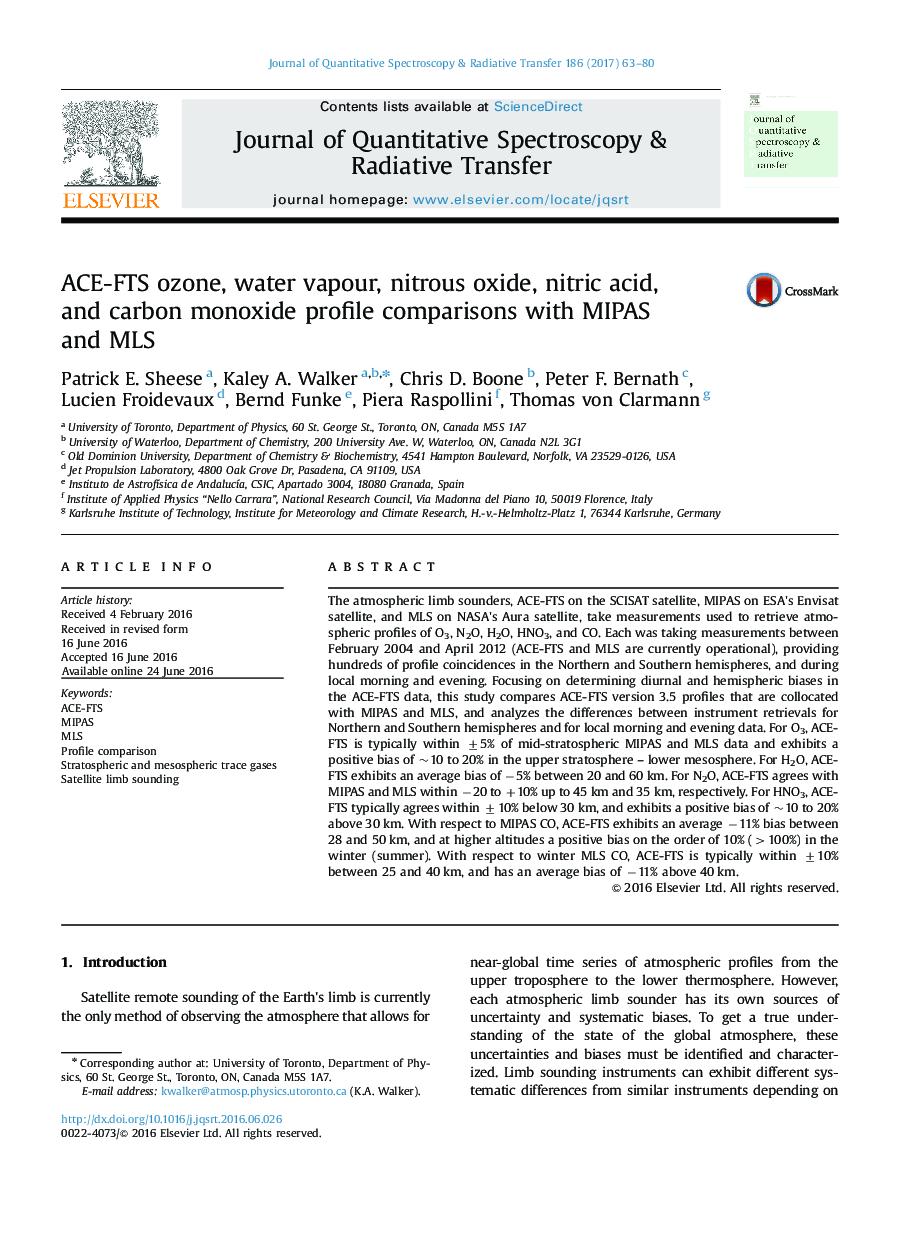| Article ID | Journal | Published Year | Pages | File Type |
|---|---|---|---|---|
| 5427487 | Journal of Quantitative Spectroscopy and Radiative Transfer | 2017 | 18 Pages |
â¢ACE-FTS v3.5 trace gas profiles are compared to co-located data from MIPAS and MLS.â¢Hemispheric and diurnal biases in the ACE-FTS data are identified and discussed.â¢Minor improvements over v2.2 for O3, N2O, and HNO3; major improvements for CO.
The atmospheric limb sounders, ACE-FTS on the SCISAT satellite, MIPAS on ESA׳s Envisat satellite, and MLS on NASA׳s Aura satellite, take measurements used to retrieve atmospheric profiles of O3, N2O, H2O, HNO3, and CO. Each was taking measurements between February 2004 and April 2012 (ACE-FTS and MLS are currently operational), providing hundreds of profile coincidences in the Northern and Southern hemispheres, and during local morning and evening. Focusing on determining diurnal and hemispheric biases in the ACE-FTS data, this study compares ACE-FTS version 3.5 profiles that are collocated with MIPAS and MLS, and analyzes the differences between instrument retrievals for Northern and Southern hemispheres and for local morning and evening data. For O3, ACE-FTS is typically within ±5% of mid-stratospheric MIPAS and MLS data and exhibits a positive bias of ~10 to 20% in the upper stratosphere - lower mesosphere. For H2O, ACE-FTS exhibits an average bias of â5% between 20 and 60 km. For N2O, ACE-FTS agrees with MIPAS and MLS within â20 to +10% up to 45 km and 35 km, respectively. For HNO3, ACE-FTS typically agrees within ±10% below 30 km, and exhibits a positive bias of ~10 to 20% above 30 km. With respect to MIPAS CO, ACE-FTS exhibits an average â11% bias between 28 and 50 km, and at higher altitudes a positive bias on the order of 10% (>100%) in the winter (summer). With respect to winter MLS CO, ACE-FTS is typically within ±10% between 25 and 40 km, and has an average bias of â11% above 40 km.
